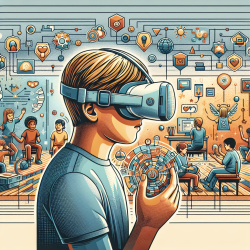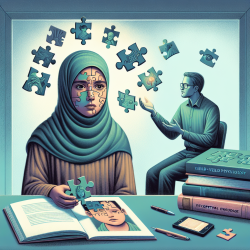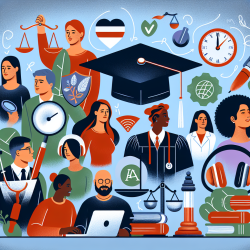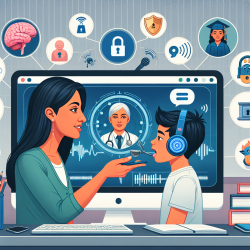Introduction
As practitioners in the field of speech-language pathology, we are always seeking innovative methods to enhance the therapeutic outcomes for children with Autism Spectrum Disorder (ASD). The recent pilot study titled Gaze Fixation and Visual Searching Behaviors during an Immersive Virtual Reality Social Skills Training Experience for Children and Youth with Autism Spectrum Disorder offers promising insights into how immersive virtual reality (IVR) can be utilized to improve social skills in children with ASD.
The Power of Virtual Reality in Social Skills Training
Virtual reality (VR) technology has emerged as a powerful tool in therapeutic settings, offering a controlled and reproducible environment for social skills training. The study conducted by Elkin et al. explores how IVR can simulate real-world social interactions, providing an objective metric for evaluating gaze fixation and visual searching behaviors in children with ASD.
The pilot study enrolled ten participants with varying levels of ASD severity. The findings revealed significant differences in gaze fixation and visual searching behaviors, which may illuminate distinct phenotypes within the ASD spectrum. Notably, children with moderate ASD demonstrated more frequent eye contact with the virtual avatar compared to those with mild ASD, suggesting that the VR environment may offer a less threatening context for social interaction.
Implications for Practitioners
For practitioners, these findings underscore the potential of VR as a therapeutic tool to enhance social skills training. Here are some key takeaways:
- Objective Measurement: VR technology allows for precise tracking of gaze fixation and visual searching behaviors, providing objective data that can inform treatment plans.
- Customized Interventions: The ability to simulate various social scenarios in VR can help tailor interventions to the specific needs and abilities of each child.
- Increased Engagement: The immersive nature of VR can increase engagement and motivation in children, potentially leading to more effective learning and skill acquisition.
Encouraging Further Research
While the results of this pilot study are promising, further research is needed to explore the long-term benefits and potential applications of VR in social skills training for children with ASD. Practitioners are encouraged to consider how VR technology could be integrated into their therapeutic practices and to contribute to ongoing research efforts in this area.
Conclusion
Incorporating VR into therapeutic interventions for children with ASD offers a novel approach to enhancing social skills and improving overall outcomes. By leveraging the insights gained from this study, practitioners can continue to innovate and adapt their methods to better serve the needs of children with ASD.
To read the original research paper, please follow this link: Gaze Fixation and Visual Searching Behaviors during an Immersive Virtual Reality Social Skills Training Experience for Children and Youth with Autism Spectrum Disorder: A Pilot Study.










